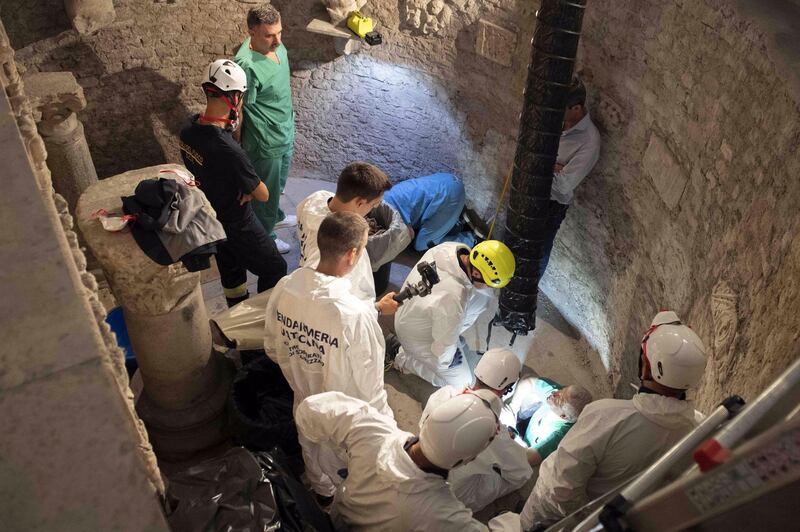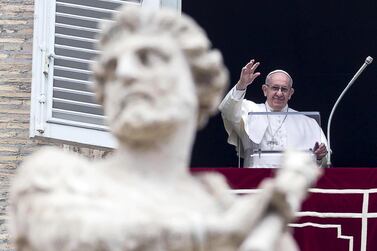One of Italy’s most enduring mysteries has taken a fresh twist with the discovery of an underground chamber full of thousands of bones during the search for a teenager from the Vatican who went missing 36 years ago.
The two chambers were discovered a week ago underneath a trapdoor at a college next to the tiny Vatican cemetery that has been the most recent focus of the hunt for Emanuela Orlandi.
Ms Orlandi was 15 when she disappeared in 1983 while returning to her family’s apartment with the walls of the Vatican City after a music lesson in Rome.
Her family had received an anonymous tip suggesting they search near the 19th century tombs of two German princesses at the Teutonic cemetery, used for centuries to bury Church figures of German and Austrian origin. The family had received a picture of an angel-topped grave in the cemetery, and a message which simply read: "Look where the angel is pointing."
The graves were opened up earlier this month but there was no sign of the remains of the teenager – or the two princesses who died in 1836 and 1840.
The search moved to the underground chambers that revealed an “enormous” amount of remains of adults and children, according to a genetics expert employed by the Orlandi family.
Giorgio Portera, the expert, said he had not expected such a large number of bones and other remains that had been “thrown into a cavity”.
“Thousands of bones have been found so we imagine they correspond to dozens of people,” he said.
The disappearance of the teenager has spawned a series of theories ranging from it being a kidnapping linked to organised crime to a cover-up involving the upper echelons of the Roman Catholic church.
One theory suggested that the girl was kidnapped in an unsuccessful effort to trade her for the freedom of the Turkish gunman who shot and wounded Pope John Paul II in 1981. Other theories aired by the Italian media have included a snatch by the Italian mafia designed to put pressure on the Vatican over an unpaid loan. The missing girl’s father was a Vatican employee who worked as a clerk.
In 2012, experts found 400 boxes of bones while exhuming the tomb of a notorious crime boss who was suspected of involvement in her kidnapping. DNA testing was carried out on the remains but no match with the missing girl was found.
Last year, bones found during ground work at the Vatican embassy in Rome sparked an Italian media frenzy suggesting they might belong to Emanuela or to Mirella Gregori, another teenager who disappeared the same year. DNA tests turned out negative.
The Vatican said that the princesses’ bones may have been moved when the college was built during the 1960s and 70s. The burial chambers were found beneath the college.
Vatican spokesman Alessandro Gisotti said the remains were removed and further studies would take place on July 27. The Vatican said it was “not possible, for the moment, to predict how long it will take”.
The missing teenager’s sister, Federica Orlandi, said that the discovery of the underground chamber was “obviously an emotional experience because I think my sister's bones could be there, but I won't think about it until we have the result”.








